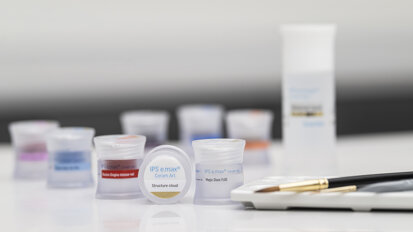COPENHAGEN, Denmark: Traumatic dental injuries to the primary dentition, particularly luxation events such as intrusion, avulsion, lateral luxation and subluxation, pose significant risk of developmental defects in the permanent successors. A recent retrospective cohort study has quantified this risk and demonstrated that both younger age at injury and greater luxation severity significantly increase the likelihood of sequelae in the developing permanent dentition.
The study, undertaken by researchers at the University of Copenhagen and Rigshospitalet, underscored the high incidence of oral trauma in preschool children, noting that it accounts for up to 17% of childhood injuries. The research further highlighted the frequent involvement of primary incisors in trauma, owing to their prominent position and anatomical vulnerability. The study aimed to assess the risk of developmental defects—demarcated opacity, diffuse opacity, hypoplasia and malformation—in the permanent successors after various injuries to the primary teeth.
The researchers analysed clinical and radiographic follow-up data from 206 patients and 360 affected teeth, compared with 1,057 matched control teeth from the same children. The cohort was stratified into three age groups at the time of injury (0–2 years, 3–4 years, and 5 years and older), and sequelae were categorised as demarcated opacity, diffuse opacity, hypoplasia and malformation.
The findings indicated that traumatic injury to primary teeth increased the risk of sequelae in the permanent dentition by more than sevenfold. Additionally, severe trauma occurring at a younger age was found to further elevate the risk. For example, children aged 0–2 who experienced lateral luxation, intrusion or avulsion were significantly more likely to develop hypoplasia or malformation compared with older age groups. Across all age groups, both demarcated and diffuse opacities were observed after various luxation injuries, including subluxation and extrusion.
The study underscores the importance of educating caregivers and clinicians on the critical nature of luxation injuries in early childhood and the need for prompt assessment and long-term follow-up—particularly in children under 3 years—to detect and manage potential sequelae in the permanent dentition.
The study, titled “Sequelae in permanent dentition after traumatic dental injury in the primary dentition—a retrospective cohort study”, was published online on 4 March 2025 in the International Journal of Paediatric Dentistry, ahead of inclusion in an issue.
Topics:
Tags:
SÃO PAULO, Brazil: Mouth breathing affects around half of the population and can lead to halitosis, a condition that, in turn, is associated with negative ...
MUNICH, Germany: Molar incisor hypomineralisation (MIH) constitutes a global oral health issue, affecting around 14% of the world’s population. Like with ...
More than 11 million people in the United Kingdom, have reported food insecurity over a 12 month period according to The Trussel Trust. Dental clinicians ...
CALOOCAN, Philippines: According to the World Health Organization, 514 million children have caries of the primary dentition. Additionally, data from 2021 ...
KRIENS, Switzerland: A brush that cleans where others do not? An expert in prophylaxis and periodontics, Dr Ulrich P. Saxer is the co-designer of a brush ...
PLYMOUTH, UK: The ramifications of sharps injuries within a clinical treatment setting extend beyond the immediate physical harm, potentially inducing ...
The role dentists play in recognizing potential cases of domestic violence is rarely discussed. In a recent interview, Dental Tribune International spoke ...
Live webinar
Mon. 12 January 2026
9:00 am EST (New York)
Prof. Judith Jones D.D.S; M.P.H., Prof. Kakuhiro Fukai D.D.S., Ph.D, Dr. Bathsheba (Bethy) Turton
Live webinar
Wed. 14 January 2026
12:00 pm EST (New York)
Dr. Théo Laplane, Dr. Robert Gottlander DDS
Live webinar
Fri. 16 January 2026
12:00 pm EST (New York)
Live webinar
Mon. 19 January 2026
1:00 pm EST (New York)
Philipp Kopp, Michael Seeber
Live webinar
Thu. 22 January 2026
2:00 pm EST (New York)
Dr. Nicola M. Grande DDS, PhD
Live webinar
Wed. 28 January 2026
8:00 am EST (New York)
Live webinar
Wed. 28 January 2026
11:00 am EST (New York)
Prof. Dr. Jan-Frederik Güth



 Austria / Österreich
Austria / Österreich
 Bosnia and Herzegovina / Босна и Херцеговина
Bosnia and Herzegovina / Босна и Херцеговина
 Bulgaria / България
Bulgaria / България
 Croatia / Hrvatska
Croatia / Hrvatska
 Czech Republic & Slovakia / Česká republika & Slovensko
Czech Republic & Slovakia / Česká republika & Slovensko
 France / France
France / France
 Germany / Deutschland
Germany / Deutschland
 Greece / ΕΛΛΑΔΑ
Greece / ΕΛΛΑΔΑ
 Hungary / Hungary
Hungary / Hungary
 Italy / Italia
Italy / Italia
 Netherlands / Nederland
Netherlands / Nederland
 Nordic / Nordic
Nordic / Nordic
 Poland / Polska
Poland / Polska
 Portugal / Portugal
Portugal / Portugal
 Romania & Moldova / România & Moldova
Romania & Moldova / România & Moldova
 Slovenia / Slovenija
Slovenia / Slovenija
 Serbia & Montenegro / Србија и Црна Гора
Serbia & Montenegro / Србија и Црна Гора
 Spain / España
Spain / España
 Switzerland / Schweiz
Switzerland / Schweiz
 Turkey / Türkiye
Turkey / Türkiye
 UK & Ireland / UK & Ireland
UK & Ireland / UK & Ireland
 Brazil / Brasil
Brazil / Brasil
 Canada / Canada
Canada / Canada
 Latin America / Latinoamérica
Latin America / Latinoamérica
 USA / USA
USA / USA
 China / 中国
China / 中国
 India / भारत गणराज्य
India / भारत गणराज्य
 Pakistan / Pākistān
Pakistan / Pākistān
 Vietnam / Việt Nam
Vietnam / Việt Nam
 ASEAN / ASEAN
ASEAN / ASEAN
 Israel / מְדִינַת יִשְׂרָאֵל
Israel / מְדִינַת יִשְׂרָאֵל
 Algeria, Morocco & Tunisia / الجزائر والمغرب وتونس
Algeria, Morocco & Tunisia / الجزائر والمغرب وتونس
 Middle East / Middle East
Middle East / Middle East













































To post a reply please login or register